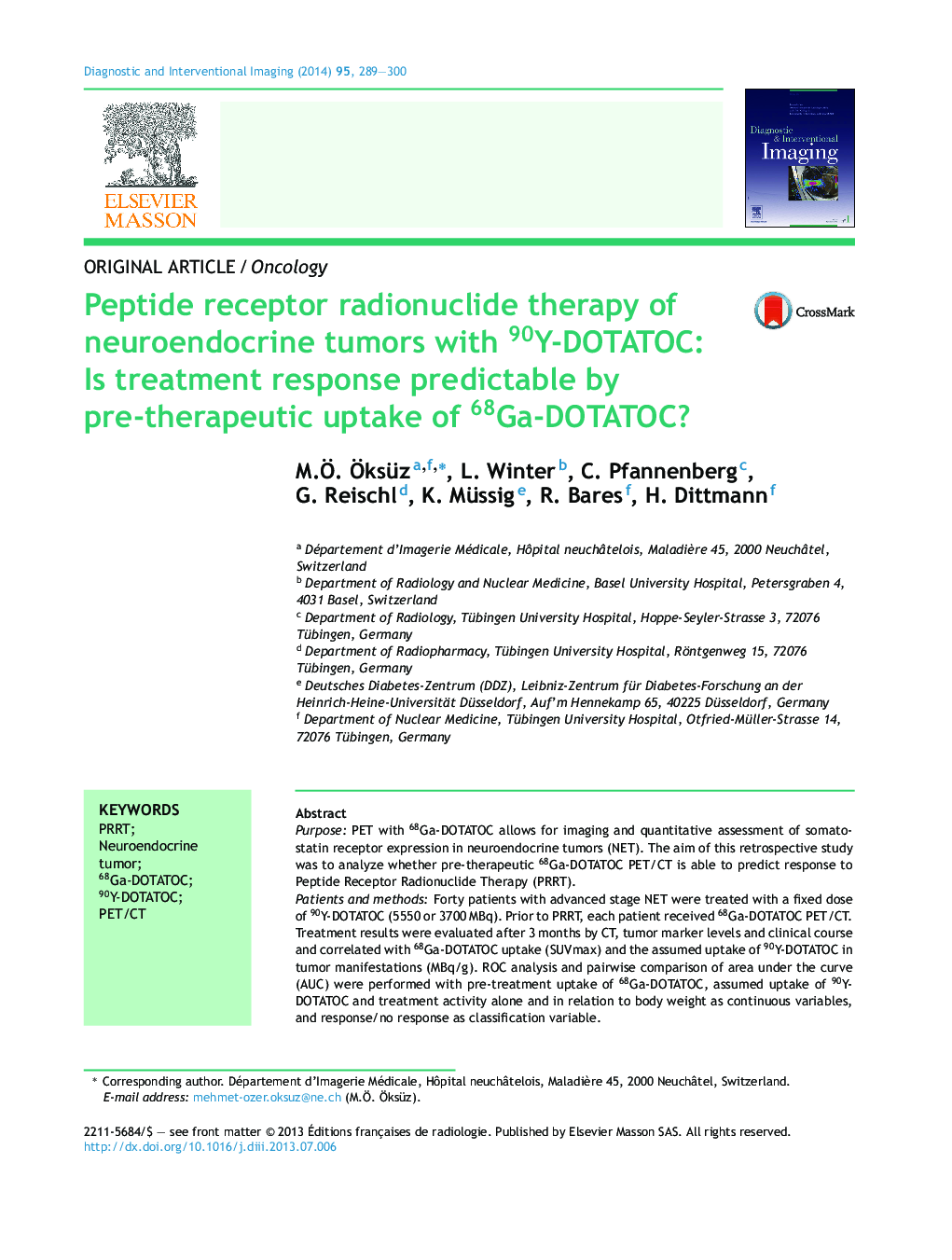| Article ID | Journal | Published Year | Pages | File Type |
|---|---|---|---|---|
| 2737847 | Diagnostic and Interventional Imaging | 2014 | 12 Pages |
PurposePET with 68Ga-DOTATOC allows for imaging and quantitative assessment of somatostatin receptor expression in neuroendocrine tumors (NET). The aim of this retrospective study was to analyze whether pre-therapeutic 68Ga-DOTATOC PET/CT is able to predict response to Peptide Receptor Radionuclide Therapy (PRRT).Patients and methodsForty patients with advanced stage NET were treated with a fixed dose of 90Y-DOTATOC (5550 or 3700 MBq). Prior to PRRT, each patient received 68Ga-DOTATOC PET/CT. Treatment results were evaluated after 3 months by CT, tumor marker levels and clinical course and correlated with 68Ga-DOTATOC uptake (SUVmax) and the assumed uptake of 90Y-DOTATOC in tumor manifestations (MBq/g). ROC analysis and pairwise comparison of area under the curve (AUC) were performed with pre-treatment uptake of 68Ga-DOTATOC, assumed uptake of 90Y-DOTATOC and treatment activity alone and in relation to body weight as continuous variables, and response/no response as classification variable.ResultsAccording to conventional criteria (tumor shrinkage, decrease of tumor markers, improved or stable clinical condition), 20 patients were classified as responders, 16 as non-responders and in four patients findings were equivocal. Using a SUV more than 17.9 as cut-off for favorable outcome, PET was able to predict treatment response of all responders and 15 out of 16 non-responders. All four patients with equivocal findings showed SUV less than or equal to 17.9 and soon experienced tumor progression. The assumed uptake of 90Y-DOTATOC in tumor manifestations using a cut-off more than 1.26 MBq/g as predictor of response was able to correctly classify 19 out of 20 responders, and 14 out of 16 non-responders. In all patients with equivocal findings, the assumed uptake of 90Y-DOTATOC was below 1.26 MBq/g.ConclusionPre-therapeutic 68Ga-DOTATOC tumor uptake as well as assumed uptake of 90Y-DOTATOC are strongly associated with the results of subsequent PRRT. The defined cut-off values should be confirmed by prospective studies and may then provide the rationale for individual dosing and selecting patients with high likelihood of favorable treatment outcome.
